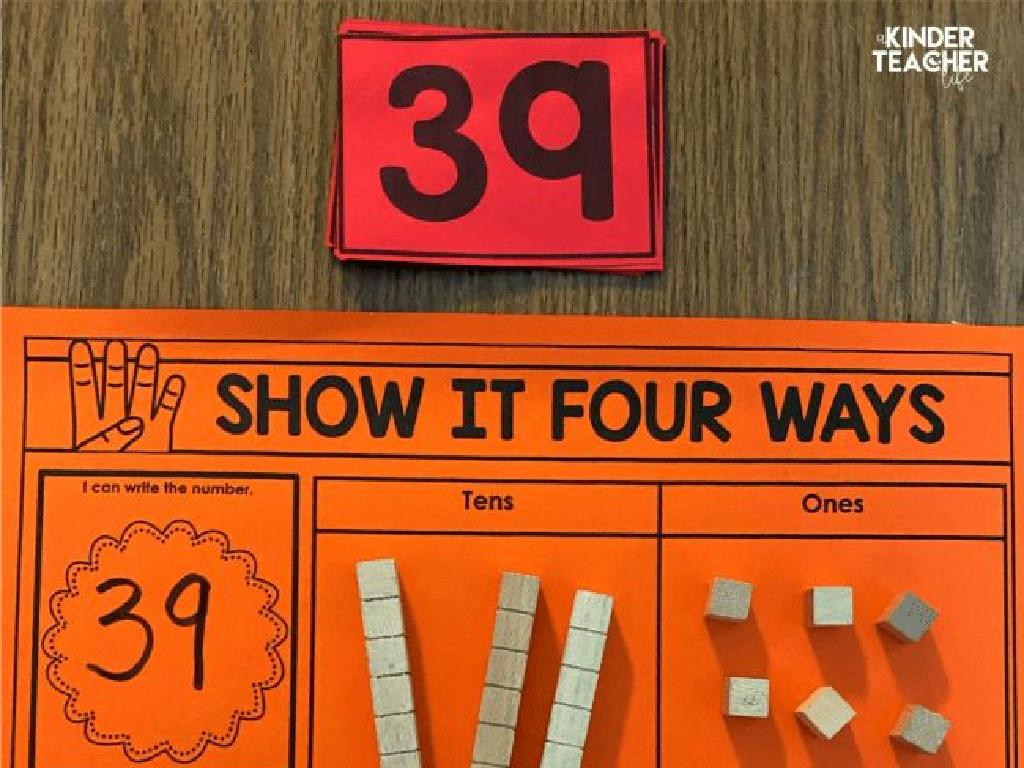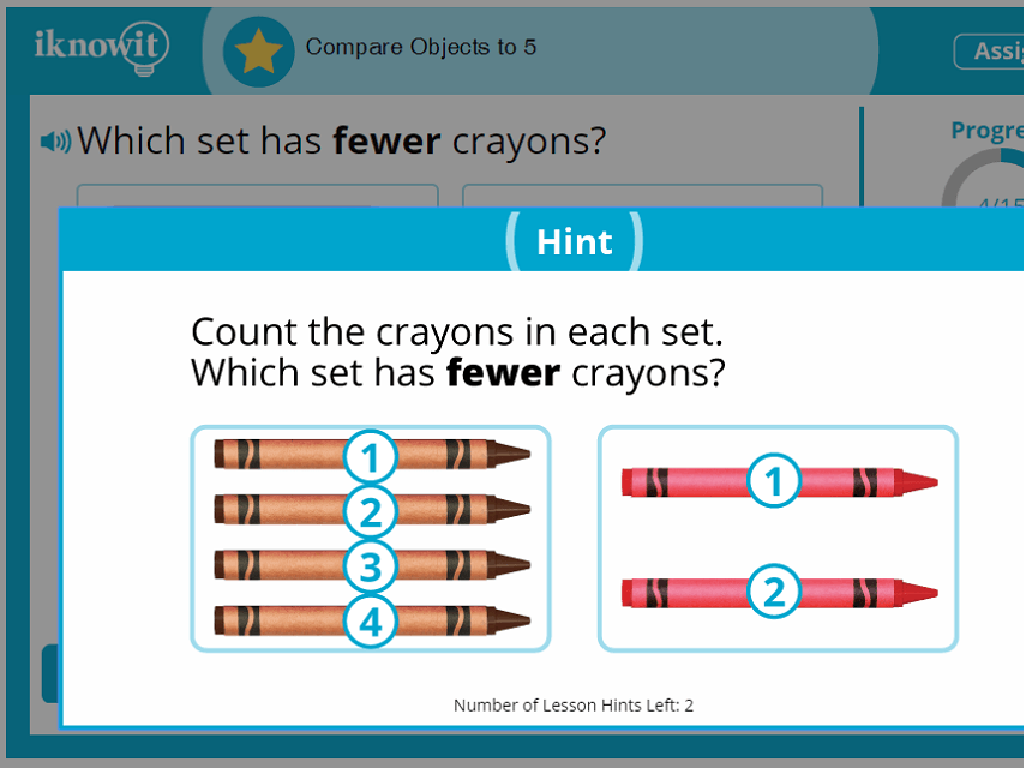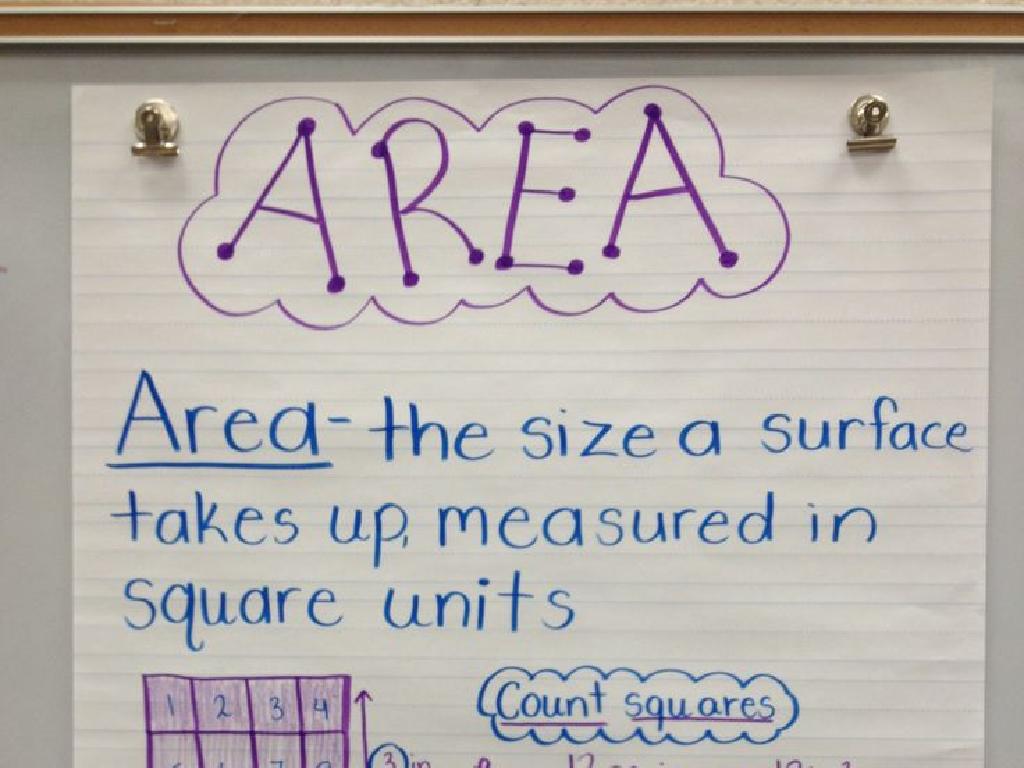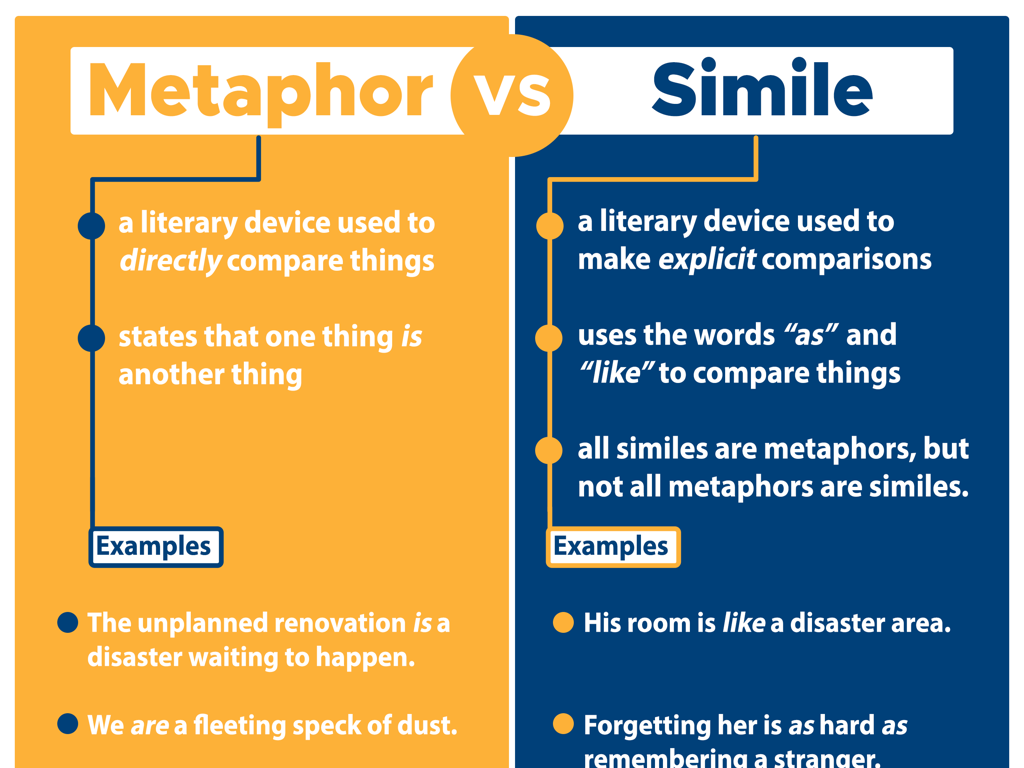Understand An Experimental Protocol About Plant Growth
Subject: Science
Grade: Sixth grade
Topic: Designing Experiments
Please LOG IN to download the presentation. Access is available to registered users only.
View More Content
Welcome to Experimental Design: Plant Growth
– Explore the Scientific Method
– A series of steps for a valid scientific inquiry
– Define what an experiment is
– A test under controlled conditions to discover an unknown effect
– Outline our Plant Growth Experiment
– We’ll investigate how different factors affect plant growth
– Discuss the importance of control
|
This slide introduces students to the concept of experimental design with a focus on plant growth. Begin by explaining the Scientific Method as a foundational process used to explore scientific questions. Clarify what constitutes an experiment, emphasizing the control of variables to test a hypothesis. Today’s focus will be on setting up a plant growth experiment, where students will learn to apply the Scientific Method by observing how various factors such as light, water, and soil type affect the growth of plants. Highlight the importance of having a control group in experiments to compare the results. The goal is to foster critical thinking and understanding of how to conduct a scientific investigation.
Understanding Experimental Protocols in Plant Growth
– Define experimental protocol
– A set of procedures to conduct an experiment
– Why follow procedures?
– Ensures accuracy and repeatability of results
– Examples in plant studies
– Like testing how light affects plant growth
– Protocol steps for our experiment
– We’ll follow steps to study plant growth effects
|
An experimental protocol is a detailed plan that outlines the steps and procedures to be followed during an experiment. It’s crucial for students to understand that following these procedures is essential for obtaining reliable and valid results. By adhering to the protocol, experiments can be replicated to verify findings. Provide examples such as how different amounts of sunlight or water might affect the growth of a plant. For our class experiment, we will have a specific protocol that outlines each step we must take to study the effects of a variable on plant growth. This will include preparing the seeds, setting up the environment, measuring growth, and recording data. Encourage students to think critically about each step and its purpose in the overall experiment.
The Scientific Method: Plant Growth Experiment
– Start with a question about plants
– What factors affect plant growth?
– Research plant growth factors
– Investigate soil, water, light, and temperature
– Formulate a plant growth hypothesis
– Predict how changing one factor might affect growth
– Conduct the plant growth experiment
– Record plant measurements and changes
|
This slide introduces the steps of the scientific method within the context of a plant growth experiment. Students should begin by asking a question related to plant growth, such as the effect of sunlight on growth rate. They should then conduct background research on various factors that influence plant growth, including soil quality, water availability, light exposure, and temperature. With this information, students can construct a hypothesis, such as ‘If a plant receives more sunlight, it will grow faster.’ Next, they will test this hypothesis by conducting an experiment where they control and measure the amount of light a plant receives and observe the effects on growth. Students should analyze their data by measuring plant height, number of leaves, or other growth indicators and draw a conclusion based on their findings. Finally, they should be prepared to communicate their results, perhaps through a presentation or report. Encourage students to think critically about their experimental design and the reliability of their results.
Designing Our Plant Growth Experiment
– Identify experiment variables
– Variables include plant type, soil, water, light, and temperature.
– Create a controlled environment
– Ensure conditions are consistent for all plants, except the variable being tested.
– Measure plant growth accurately
– Use rulers to measure height, and scales for weight at regular intervals.
– Record observations systematically
– Keep a detailed log of growth, color changes, and other notable differences.
|
This slide outlines the steps for designing a plant growth experiment. Students will learn to identify variables such as the type of plant, soil quality, water frequency, light exposure, and temperature. Emphasize the importance of a controlled environment where only one variable changes while others remain constant. Teach students how to measure plant growth using rulers for height and scales for weight, and the importance of regular intervals for accurate data. Encourage them to record their observations in a systematic way, noting any changes in growth, color, and other characteristics. This will help them understand the scientific method and the importance of precision and control in experiments.
Understanding Variables in Plant Growth Experiments
– Independent Variable: Water amount
– The variable we change to test effects on plant growth
– Dependent Variable: Plant growth
– The outcome we measure, affected by water changes
– Controlled Variables: Soil, Pot, Species
– Keeping soil type, pot size, and plant species constant ensures a fair test
– Significance of Variable Control
– Controlling variables lets us accurately determine the effect of water on growth
|
This slide introduces the concept of variables in a scientific experiment, specifically one that tests the effects of water on plant growth. The independent variable, the amount of water, is what we change to see how it affects the dependent variable, plant growth. Controlled variables like soil type, pot size, and plant species must be kept the same to ensure that any changes in plant growth are due to water amount alone. Emphasize the importance of controlling variables to maintain the integrity of the experiment’s results. Discuss with students why each controlled variable is chosen and how it might affect the outcome if it were not kept constant.
Setting Up the Plant Growth Experiment
– List of materials needed
– Pots, soil, seeds, water, ruler, and sunlight or grow lights.
– Step-by-step experiment setup
– Fill pots with soil, plant seeds, water regularly, and measure growth.
– Safety precautions to follow
– Wear gloves, keep area clean, and handle plants gently.
– Best practices for accuracy
– Ensure equal sunlight for all plants and record data daily.
|
This slide is designed to guide students through the initial phase of setting up a plant growth experiment. It’s crucial to start with a clear list of all materials to ensure students are prepared. The step-by-step instructions should be followed carefully to maintain consistency across all student experiments. Emphasize the importance of safety, such as wearing gloves when handling soil and being gentle with the plants to prevent damage. Best practices include making sure all plants receive equal amounts of sunlight and water, and that students are diligent in recording their observations daily. This will help in maintaining the integrity of the experiment and ensure reliable results.
Observing and Recording Plant Growth Data
– Techniques to observe plant changes
– Note color, height, number of leaves, and other visible changes.
– Maintaining an accurate log
– Use a structured format for dates and details of observations.
– Consistency in observations
– Observe at the same time each day to maintain consistency.
– Why consistent records matter
– Consistent records allow for reliable comparisons over time.
|
This slide aims to teach students the importance of careful observation and record-keeping in scientific experiments, specifically in monitoring plant growth. Students should learn how to observe changes in plants, such as alterations in color, size, and leaf development. Emphasize the need for keeping a detailed logbook with a consistent format, which includes recording the date, time, and specific observations for each entry. Consistency in the timing of observations is crucial to reduce variables that could affect the data. Explain that maintaining consistent records is vital for analyzing the experiment’s results accurately and drawing valid conclusions about the factors influencing plant growth. Encourage students to develop their own logbook template and practice taking notes as part of their homework.
Analyzing Plant Growth Experiment Results
– Analyzing experiment data
– Look at measurements, compare with initial data
– Recognizing growth patterns
– Observe changes over time, note any trends
– Drawing conclusions from data
– Use data to support or refute your hypothesis
– Reflecting on experimental findings
|
This slide aims to guide students through the process of analyzing data from their plant growth experiments. Students should compare their recorded measurements against the initial data to identify any changes in plant growth. Encourage them to look for patterns or trends in their data over the course of the experiment. They should then use these observations to draw conclusions, determining whether the results support or contradict their original hypothesis. Finally, students should reflect on the experiment’s findings and consider any factors that may have influenced the results. This analysis is crucial for understanding the scientific method and developing critical thinking skills.
Sharing Our Findings: Plant Growth Experiment
– Prepare your results presentation
– Organize data and create charts or graphs to show plant growth over time.
– Discuss the learning outcomes
– Talk about what the results mean and what was surprising or expected.
– Reflect on experiment questions
– What questions arose during the experiment? How might they be answered?
– Think ahead for future experiments
– What variables could we change next time to learn more?
|
This slide aims to guide students through the process of sharing their experimental findings on plant growth. Students should be encouraged to prepare a clear and informative presentation, using visual aids like charts to illustrate their data. They should discuss the outcomes of the experiment, including any unexpected results or confirmations of their hypotheses. Encourage them to think critically about the questions that emerged during the experiment and how they might investigate these in the future. Finally, prompt them to consider new variables they could test to further their understanding of plant growth. This reflection and forward-thinking will help them develop a scientific mindset and prepare for future experiments.
Class Activity: Design Your Own Plant Growth Experiment
– Select a plant and a growth variable
– Choose any plant, like a bean or pea, and decide what you want to test, such as the amount of sunlight.
– Draft your experiment protocol
– Write down step-by-step how you’ll conduct the experiment, including control and variable groups.
– Share your experiment design
– Prepare a brief presentation to explain your experiment to classmates.
– Reflect on the learning process
– Think about what you expect to learn and how this can apply to real-world scenarios.
|
In this activity, students will apply their understanding of experimental design by creating their own protocol to test how a variable affects plant growth. They should consider all aspects of the scientific method, including hypothesis, controls, variables, and data collection. Provide guidance on how to structure their experiment and encourage creativity. Possible variables to test could include water levels, light exposure, or type of soil. After drafting their protocols, students will present their designs to the class, fostering peer feedback and collaborative learning. As a teacher, be prepared to offer suggestions and ask probing questions to deepen their understanding. This activity will help students grasp the practical aspects of scientific experimentation.





